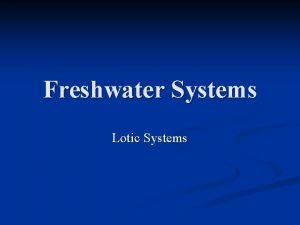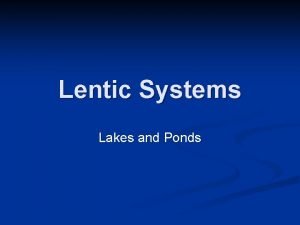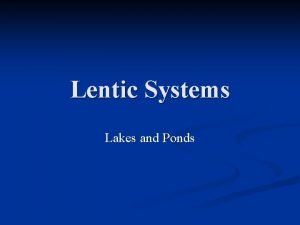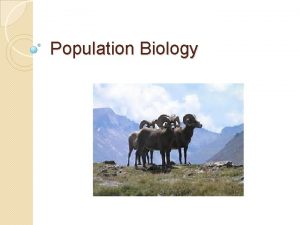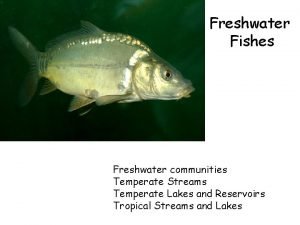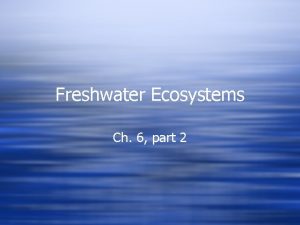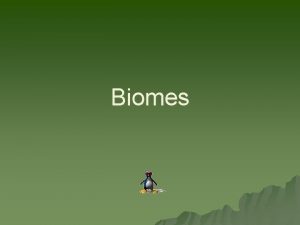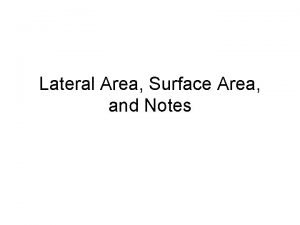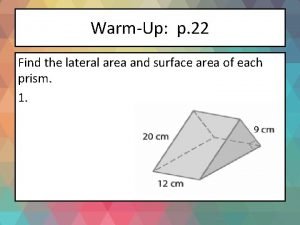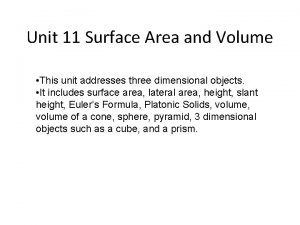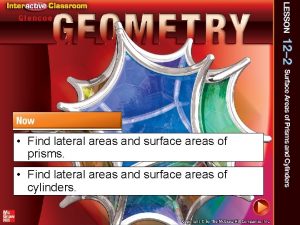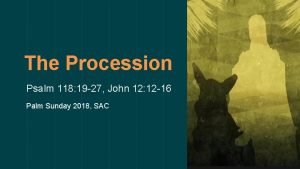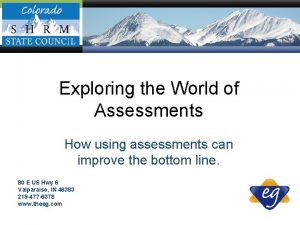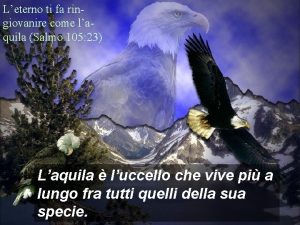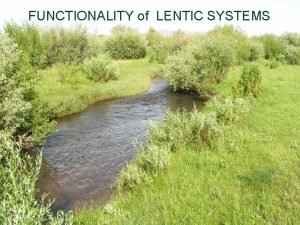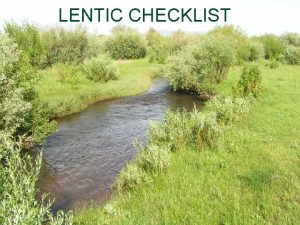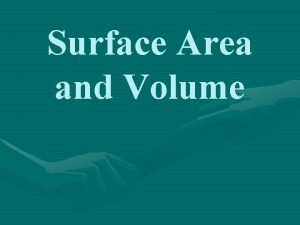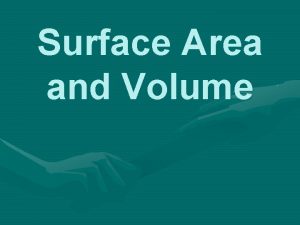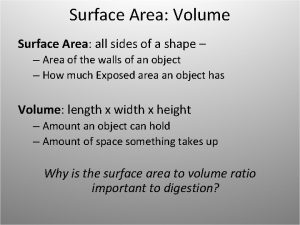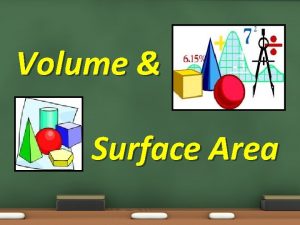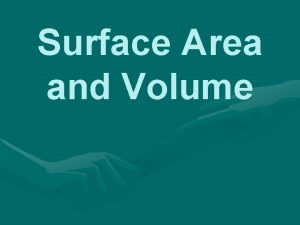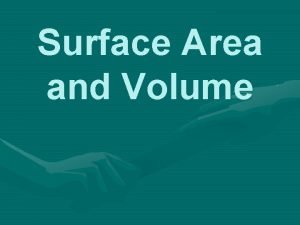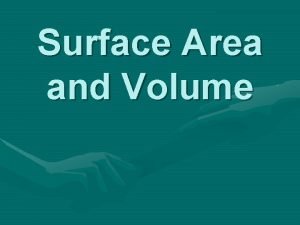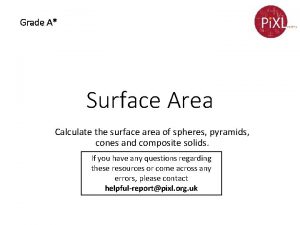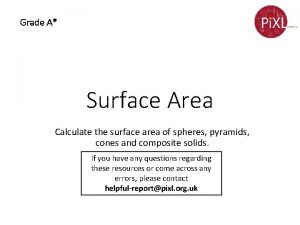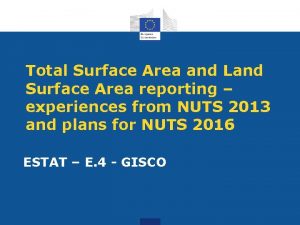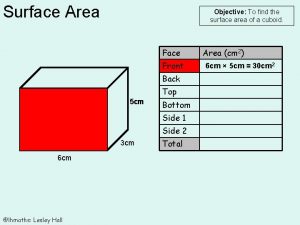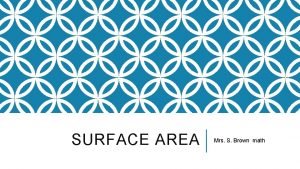Lotic vs Lentic Systems Comparisons Surface area 118
























- Slides: 24

Lotic vs. Lentic Systems

Comparisons Surface area - 1/18 th that of lakes Ø Age - most stream channels ancient compared to most lakes Ø Flow - the most influence on making stream environments different than lakes Ø

Flow Ø Produces structure of river, bed, influences biota Ø Currents vary seasonally, longitudinally, vertically

Flow Ø Generally <3 m/sec (up to 8 m/sec) Ø Maximal during greatest runoff (wetter season)

Flow Ø Current speed decreases as depth increases Ø Decrease from midchannel to edges (frictional forces between water, substrate - produce boundary layer)

Flow Ø Average velocity at 0. 6 depth for shallow streams (or average of readings at 0. 2 and 0. 8 depth in deeper streams or rivers)

Flow Ø Velocity generally decreases from headwaters to mouth Ø Headwaters erosional - larger substrates Ø Near mouth depositional - smaller substrates

Flow Ø General pattern not always present Ø Velocity may be constant, or may increase

Alternating Habitats Ø Riffles and pools Ø Faster currents in riffles Ø Regular spacing - riffles 5 -7 stream widths apart

Water Temperatures Ø More rapid changes than in lentic waters Ø Daily cycles up to 6º C in summer Ø Average temperatures tend to increase downstream

Water Temperatures Ø Little stratification because of flows Ø Warmer temps alter viscosity l l l Faster flow Carry less silt Reduces boundary layer

Water Temperatures Ø Winter - entire stream declines to 0º C before ice forms Ø Ice formation at any layer Ø Frazil or anchor ice

Light Penetration Ø Less in moving vs. standing waters Ø Increased turbidity Ø Increased shading by riparian vegetation

Chemistry Ø Dependent on drainage basin Ø General inverse relation between discharge and concentrations of dissolved materials

Chemistry Ø Little zonation of dissolved materials or gasses Ø Turbulent flow, gasses at saturation for temp. , pressure Ø Significant changes by activities of living organisms

Biota Ø Phytoplankton in streams relatively meager Ø Few planktonic forms Ø Mostly benthic forms

Biota Ø In larger streams, plankton always present Ø Planktonic diatoms dominate Ø Selective elimination of other types?

Biota Ø Most primary production in small streams from periphyton growing on bottom Ø Unusually productive because of nutrient delivery

Biota Ø Zooplankton numerous only in larger systems Ø Dominated by rotifers Ø Few crustacean zooplankters

Biota Ø Benthic invertebrates diverse (especially insects) Ø Substrate is major controlling factor

Biota Soft substrate types found in both flowing, standing waters Ø Hard substrate types often unique l Adaptations to cope with flowing water (flattening, hooks, suckers, secretions, ballast) Ø

Biota Ø Longitudinal rather than depth zonation Ø Changes in response to temp. , current, food availability

Biota Ø Fish exhibit distinct habitat, longitudinal differences Ø Those in pools or downstream zones also found in lakes

Biota Ø Those in headwaters adapted for life in moving water
 Lotic
Lotic Lentic lake
Lentic lake Pond vs lake
Pond vs lake Find the total surface area of a triangular prism
Find the total surface area of a triangular prism Surface area of a cone
Surface area of a cone Limiting factor biology definition
Limiting factor biology definition -is an example of a lentic ecosystem.
-is an example of a lentic ecosystem. Lentic ecosystem
Lentic ecosystem Lentic ecosystem
Lentic ecosystem Lateral area def
Lateral area def Surface area vs area
Surface area vs area Lateral edge
Lateral edge Ateral surface area
Ateral surface area Definition of lateral area
Definition of lateral area How to find the lateral area of a regular octagonal prism
How to find the lateral area of a regular octagonal prism Psalm 118:19-27
Psalm 118:19-27 Hmn-118
Hmn-118 Salmo 118, 105
Salmo 118, 105 Hpd 137 uitm
Hpd 137 uitm French texts for reading
French texts for reading Predictive index vs disc
Predictive index vs disc 118 iq score
118 iq score 118/151
118/151 Salmo 105:1
Salmo 105:1 Psalm 118 8 9
Psalm 118 8 9
